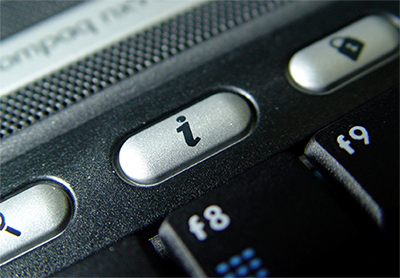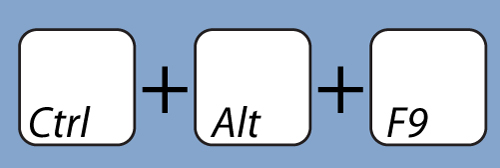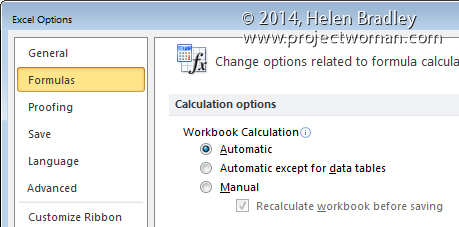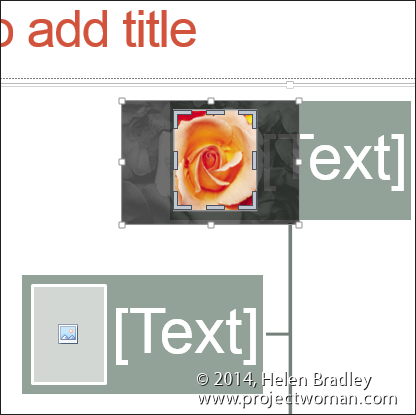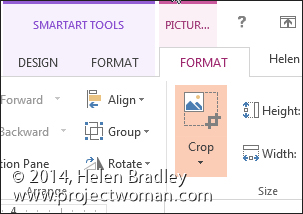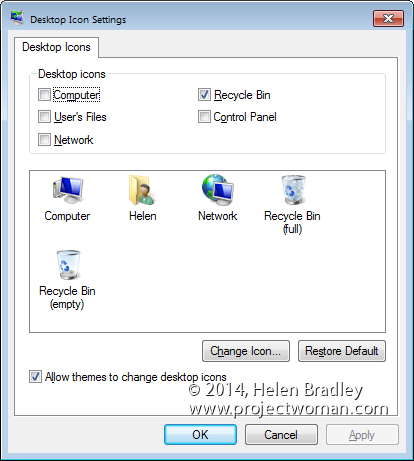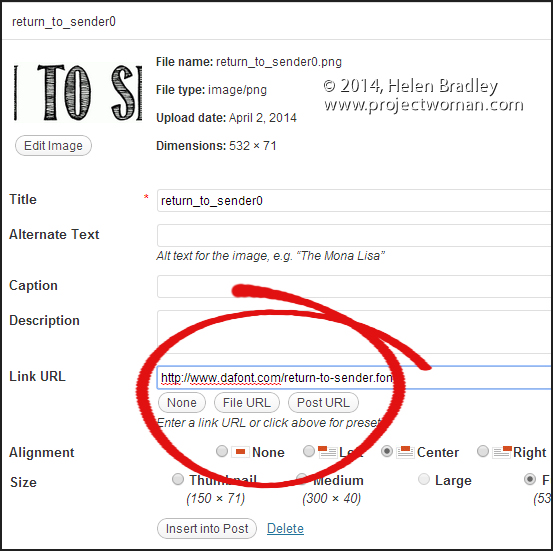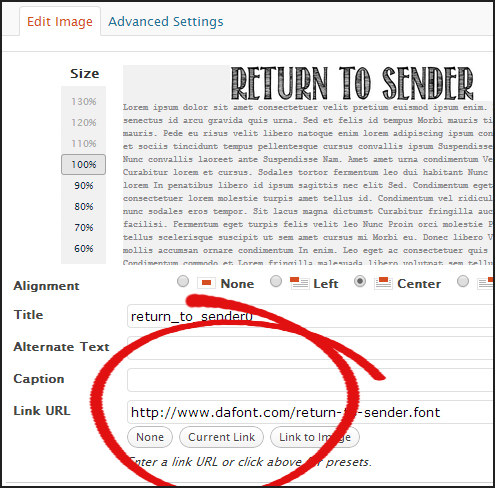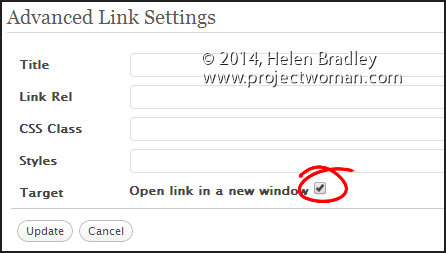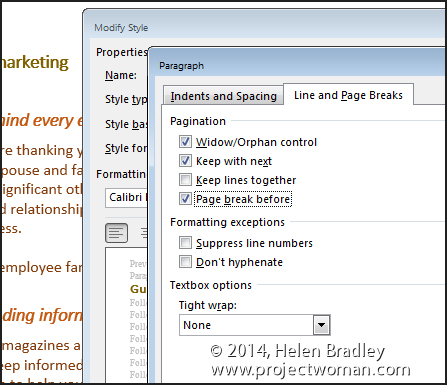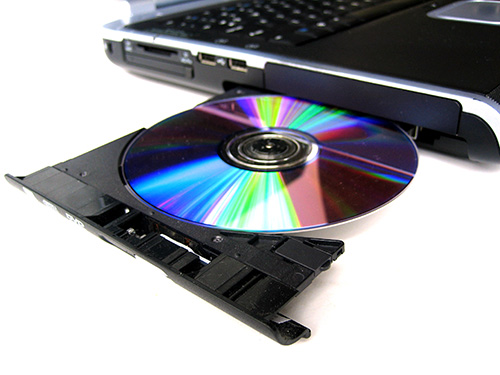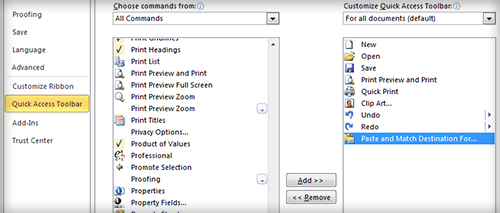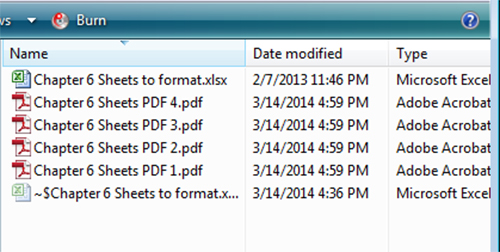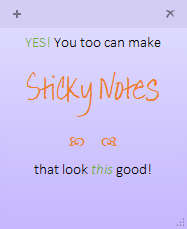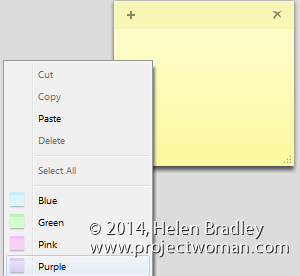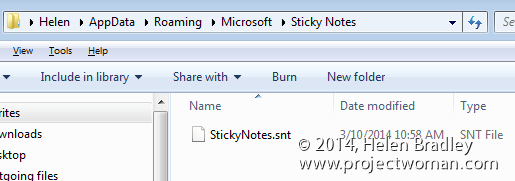Wednesday, August 20th, 2014
A Great Microsoft Office Tutorial Resource
Great find! A list of good quality Microsoft Office tutorial resources
I’ve recently discovered an enormous list of Microsoft Office tutorials that may be worth checking out. Each piece of Office software has several listed tutorials ranging from beginner to advanced difficulty and general to specific usage.
Best of all, each tutorial has a brief summary of its contents so you can quickly decide if its new and interesting information. Hopefully every Office user will find something of use. You can visit the page here.
Labels: Excel, mba, Microsoft, ms office, Office, PowerPoint, resource, tips, tutorials, Word
Thursday, July 31st, 2014
Force Excel to Recalculate a Worksheet
Help! My Excel formulas aren’t updating – how can I make Excel recalculate everything?
I have been working on a very large and very complex worksheet today. It uses a lot of custom functions to manage the calculations and as I was working on the functions I was plagued with a problem. You see Excel refused to update the cells that contained formulas based on my functions. It meant I was continually thinking that the problem was with my code. Sometimes the code was a problem but when formulas don’t update you just don’t get any visual feedback as to what is going on. I checked the Options to make sure that Calculation was set to be done automatically and it was.
Turns out the problem is a known one and can happen in Excel. How horrible is that? Excel won’t recalculate? Wow! That’s like Word not spell checking or not letting you type the letter e!
Anyway the solution is to press Control + Alt + F9 to force every formula in the worksheet to recalculate. When you do this, it might take a while for it all to recalculate but at least the data will now be accurate!
Labels: automatic calculation, Excel, excel calculate now, excel recalc, force global recalculation, force recalculation, formulas won't calculate, recalculate, recalculate formulas
Thursday, July 24th, 2014
Insert Text from a File into Word
You can quickly insert text from a file into your document using Word’s Text from File command. This used to be as simple as choosing Insert > File but the command got hidden behind an additional layer of the UI in Word 2007, making it almost entirely invisible to most users.
To insert text from a file in all recent versions of Word, open the Insert tab in the ribbon and, in the Text settings find the Object button. Click the small arrow to the right of the Object button, and choose Text from File…. Choose the file you want and click Insert. The file type selection here defaults to Word documents only, so if you wish to insert a .txt file or other non-Word document, you’ll have to change the file type to your desired type or All Files.
If you insert a Word document it will include all elements of the document such as images and special formatting. If you wish to include the file’s header or footer (if it has one), you should insert the file into a new section of your document. Be careful when inserting multiple files with different formats, since text from one file may take on another file’s format if the inserts aren’t separated properly.
Monday, June 16th, 2014
Resize and Position Photos in SmartArt Placeholders
Yikes! Just how do you resize a photo inside a PowerPoint or Word SmartArt placeholder
I got an email from a reader this morning. He has a PowerPoint slide (but it could as easily be a Word document or an Excel worksheet) and he wants to size a photo inside a placeholder. You see he was making an organization chart and he was dealing with lots of different head shots – all photographed differently. He wanted to make the faces the same relative size inside the placeholders – but to do this he had to get access to the photos inside the placeholders.
You see that’s the problem, every time you right click the placeholder and choose Size and Position you’re affecting the placeholder not the thing inside it! The solution is to use the Crop tool – so click on the placeholder and choose Picture Tools > Format tab and click the Crop tool.
Now you get handles around your photo and you can drag the handles to resize the image and you can move it to change its position inside the placeholder. When you’re done, click Crop again to finish. Easy when you know how.
Labels: Excel, hierarchy, organization chart, placeholder, position photo, PowerPoint, resize image, smart art, SmartArt, Word
Wednesday, April 30th, 2014
Link an Image to a Web Page in WordPress
 Stop stressing – here’s how to create a link from an image in WordPress.org
Stop stressing – here’s how to create a link from an image in WordPress.org
It’s dead easy to create an image as an anchor in HTML so, when a visitor clicks your image they are taken to a web page. The same cannot be said for a self hosted WordPress page – it’s ridiculously hard to link an image to a webpage until you know how it is done and then it is simple!
I made the mistake in the past of trying to edit the HTML myself. It was an exercise in frustration as WordPress just seems to knock the code out and link back to the image and not the page. I got it to work a few times but I’m blowed if I can remember exactly how. So, today, when I was editing a post my assistant wrote about free fonts that included pictures of the fonts I realized I needed to solve this problem and fast!
I wanted the font images to be linked to the download page – should be simple, but it isn’t.
Here is an image linked the way WordPress defaults to linking – it just opens the image in its own browser window – sucks!
Now lets look at what it should do – click this and it opens a new browser window at the download site:
The solution is part WordPress and part html hack!
To begin, when you go to insert the image into the post there is a link box – into this you should type the link you want the image to open when clicked.
Unfortunately this won’t open a browser window so you’ll then have to go to the HTML view and locate the image link and add the code after the image – the code is a simple target=”_blank” entry inside the tag itself as shown here:
Now, if you put an image into a post and forget to add the link all is not lost – in fact it works better. If you click on the image in Visual view you’ll see two icons, click the image icon to open up a screen which lets you edit the image code:
Now you can add the link code:
Then click the Advanced Settings tab and enable the Open Link in a New Window checkbox, then click Update and you’re done.
It’s not as simple or as clear as it might be but I’m willing to bet that this post will help out a lot of struggling WordPress bloggers!
Labels: image anchor, image hyperlink, image link, target new browser window, wordpress.org
Thursday, April 10th, 2014
Make a Style that forces a page break in Word
If you always start a new page for a particular type of heading – include the page break in the style
When you always start a major heading item on a new page in a Word document you can configure your heading style so it has the page break built into it – saving you having to insert it manually.
To do this, select some text with formatted with the style that is to include the page break and locate the style in the Style gallery. If it does not appear there, display the Styles and Formatting task pane by clicking the dialog launcher in the bottom right of the Styles area in the ribbon.
Right click the Style name, choose Modify and then Format.
Click the Paragraph option and then click the Line and Page Breaks tab.
Enable the Page Break Before checkbox and click Ok twice.
The page break is now part of the style so a new page will be started each time you use that style. The style will also update and effect any text already formatted using that style in the current document.
Labels: heading style, Page Break, style, style tips, Tutorial, Word
Wednesday, March 26th, 2014
Play and Burn DVDs in Windows 8
If you’re using Windows 8 or 8.1 you can play videos and movie files you have stored on your computer but you can’t view DVDs using Windows Media Player—this feature was removed from Windows 8 along with the Media Guide. If you want to be able to play DVDs in Windows 8 you will need to download and install a DVD player. If you’re using Windows 8 Pro then you can download and install Microsoft’s Windows Media Center which costs $9.99 – this site will step through the process. If you’re not using the Pro version then you would need to upgrade to Pro to use the Media Center, which ends up being a $100 upgrade just for the ability to play a DVD. Instead, I recommend you use the free VLC Media Player.
If you need to burn DVDs you will need a DVD burner to do so. Windows 8 doesn’t ship with a DVD burner but that doesn’t mean that the manufacturer of your computer hasn’t provided one. Check the Start screen and see if there’s a DVD burner already installed. If not, here is a round up of some of the DVD burning tools around which are Windows 8 compatible. The good news is that most have free trial versions so you can test them out and see how they perform:
Wondershare DVD Creator — $39.95
Ashampoo Burning Studio Free — upgrade to full version for $49.99
Aimersoft DVD Maker for Windows – $39.95
Nero Burning ROM 12 – $49.99
Labels: burn, dvd, free, play, player, software, trial, Windows 8
Sunday, March 23rd, 2014
Easily Paste Web Content into Excel with Destination Formatting
When pasting large data tables from your web browser into an Excel file you’ll probably be displeased to find that they do not match the formatting of the worksheet.
By default Excel will paste the data with the formatting it used on the source web page instead. This is rarely useful, since it’s very unlikely the web page had formatting that is compatible with your document. As you can see in the image above, using the source formatting can result in the inclusion of links, improper font and font size, and a number of other formatting issues.
To make Excel paste the data with destination formatting (i.e. the formatting of the destination Excel worksheet), you’ll need to add a special command to your quick access toolbar. To do this, select File > Options > Quick Access Toolbar. Above the left column, select the Choose commands from dropdown and choose All Commands. Scroll down the list and find Paste and Match Destination Formatting. Select it and click Add, then OK.
Now whenever you wish to paste web data into Excel, click the Paste and Match Destination Formatting button in the Quick Access Toolbar instead of using the standard paste tool. This will result in the data being automatically formatted to match the look of the rest of your worksheet.
Labels: default, destination, Excel, fix, formatting, Paste, worksheet
Friday, March 21st, 2014
How to Fix Excel Printing a Workbook to Multiple PDF Files
Learn how to make sure that printing multiple sheets to a pdf gives one pdf and not many
If you have ever tried to print a large Excel workbook to a PDF file, you’ve probably run into this issue. You press print, Excel asks you to name the PDF, and then it begins to print. Everything seems fine, but then Excel asks you to name another PDF, then another, then another, ad infinitum. When the operation finally finishes, Excel has properly printed the workbook to a PDF format, but your worksheets have been split into several different PDF files. Some PDFs contain multiple worksheets, others only a single one, but all you really wanted was one PDF file with the entire workbook.
It turns out this issue is caused by having different Page Setup options on each worksheet. For example, Excel can’t print two pages with different paper sizes to the same “piece of paper” (actually a PDF in this case). Instead, it insists on having two different PDFs to print to, one for each paper size. So, to resolve this issue, you must make sure each worksheet’s page setup agrees with the others.
Fortunately, doing this is very simple. To begin, in your Excel workbook, right click one of your worksheet tabs at the bottom of the window and choose Select All Sheets. Any changes to the Page Setup options will now be applied to every worksheet.
This means we don’t have to check each worksheet to make sure it has the same settings as the others; we simply choose which settings we want and all the worksheets will automatically match. To do this, go to the Page Layout tab in the ribbon. In the Page Setup section, click the small arrow in the bottom right corner to open the Page Setup dialog.
The Page tab of the dialog contains the critical options that can lead to this issue, namely the paper size and print quality settings. Change these to whatever you wish, typically something like letter paper at 300 dpi. Other settings, such as orientation and scaling, do not cause the multiple PDFs issue so if you wish you can change them for individual worksheets. Still, it’s best to have all worksheets print with the same settings. Once you have chosen your desired settings click OK and they will be applied to every worksheet.
You can now print your workbook to a single PDF file.
Labels: Excel, fix, multiple, Office, PDF, print, solution, workbook
Thursday, March 20th, 2014
Create Your First Access Database – Pt 4 – Report Design
Database in Microsoft Access
Learn to create a database in Microsoft Access. This video steps you through the process of creating a report for your Access database file. In other parts of this series you can learn how to create the database, write Queries and create a Form for easier data entry.
For a text version of this video check out this article on my website: First Steps with Access
Labels: Access, access 101, database, report, report design, vedio
Friday, January 31st, 2014
Mac lock and display dimming timing
Memo to my Mac – Don’t go to sleep on me!
Hmmm me and my MacBook Air are getting along pretty well but some things still bug me from time to time.
One is the display dim time. You see it seems like I just look away and all of a sudden the Mac has gone elsewhere – the screen turns off and I have to wake it back up and enter my password.
Right now I am trying to download some software so this is getting pretty annoying. I want to be able to see the progress without having to the Mac up all the time. This constant jiggling the touchpad and entering a password is becoming frustrating.
Seems like there are a couple of settings needing changing. One is in Settings > Security & Privacy. If I set the Require Password value to something more than Immediately I will get some leeway in having to enter my password all the time. I set this to 1 hour. But, the screen is still dimmed after only a minute or so. That setting is in Settings > Energy Saver – there you can set the Display Sleep – mine was set to 1.5 minutes – I ramped that up to 1 hour.
So now my Mac doesn’t go to sleep when I am downloading stuff on it and working on another computer and I don’t have to enter my password like every few minutes. In short, life is a lot simpler.
Hope this helps you and your Mac to be friends again?
Labels: dim, energy saver, mac, password, security and privacy, settings, sleep


